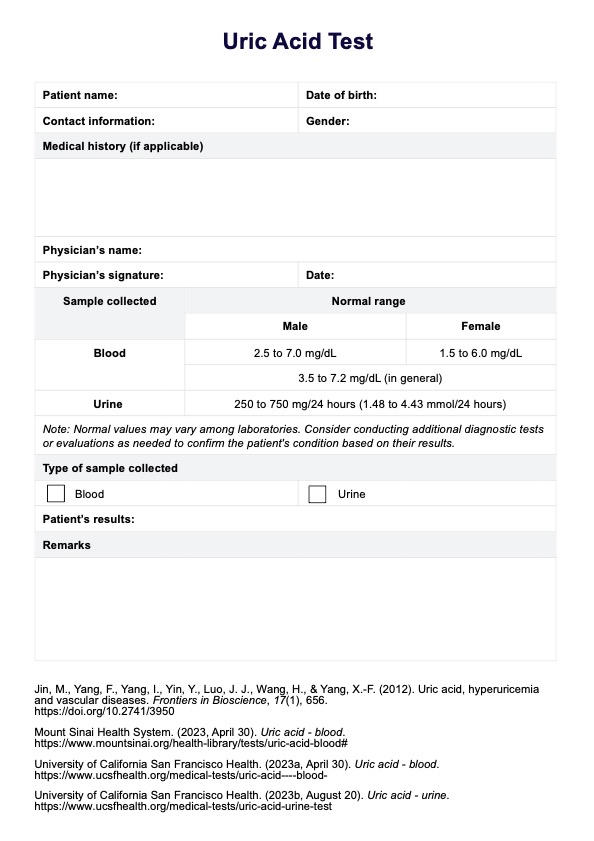If uric acid levels are high, they can lead to conditions such as gout, characterized by painful joint inflammation caused by uric acid crystal formation. Additionally, consistently elevated levels may increase the risk of kidney stones and vascular diseases.

Uric Acid
Use or Uric Acid Test template to document and manage patients' uric acid levels efficiently for accurate and effective care.
Uric Acid Template
Commonly asked questions
A Uric Acid Test indicates how well the body produces and eliminates uric acid, helping diagnose conditions like gout, kidney disease, and metabolic disorders. It provides insight into the patient's overall health and can guide treatment decisions.
The first symptoms of high uric acid levels typically include sudden and severe joint pain, often starting in the big toe, accompanied by swelling and redness. Patients may also experience warmth in the affected area, which indicates inflammation from uric acid crystal deposits.
EHR and practice management software
Get started for free
*No credit card required
Free
$0/usd
Unlimited clients
Telehealth
1GB of storage
Client portal text
Automated billing and online payments











